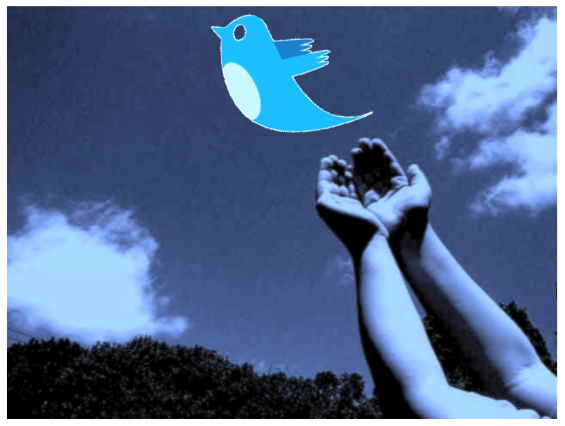Friend and follow abuse is still pervasive on social networks. Sure, it depends on what you want to get out of those social networks, but I still believe that less is more. Social networks have paid special attention to creating connections but very little to breaking them. Yet, that’s a critical part of any social construct.
ManageFlitter
I’ve used ManageTwitter to prune who I follow. In late April Twitter threatened to shut them down because they were in violation of Twitter’s Automation Rules and Best Practices. Thankfully a few UI changes and a name change saved the service.
ManageFlitter helps you unfollow people in a few ways. It suggests you unfollow people who aren’t following you back. This is my least favorite option since it feels too much like high school. Don’t get me wrong, I do use it, particularly for those who follow, wait for a follow back and then unfollow.
It also identifies inactive accounts, as well as those that are talkative or quiet. Unfollowing on all three criteria can help remove noise and dead weight. Finally, ManageFlitter will also tell you which accounts are using the default avatar, which can be a good sign of a spammer or automated account.
My Imaginary Unfollow App

As much as I like ManageFlitter it’s still rather rudimentary. So I got to thinking about what type of signals I would use to unfollow people.
Tweets without Links
If you’re using Twitter as a source for information and news, having people who excessively Tweet without links might not be very productive. Your dining activities, traffic woes or inspirational quotes might not be adding enough value.
Tweets that are Retweets
Retweets aren’t necessarily a bad thing but it would be good to know if the lion’s share of a person’s Tweets are Retweets. This could, in fact, be a good thing if the quality of your Retweets is high. Human filters are a good thing and I thank folks like Atul Arora, Rob Diana, Louis Gray and Mahendra for their continuing efforts in making me smarter. However, it could also be a bad thing if it’s just a steady diet of day old TechCrunch articles.
Tweets that are @Replies (not to you)
Some people use Twitter as a conversation platform. Now, I think that’s a bit “square peg round hole” but to each their own. However, it can be a as exciting as watching paint dry to watch folks banter back and forth.
Tweets that are @Replies (to you)
This is a clear sign that you’ve got some sort of real relationship with a person. It likely makes them a keeper regardless of any other signal.
Tweets that have multiple @Replies
Multiple replies in a Tweet could be a sign of someone who is efficiently responding to others. Someone who is actually being social rather than asocial.
However, you’d want to see the percentage be a small portion of total Tweets. Otherwise, multiple replies in a Tweet could be a sign of automation or a ponzi-like follow scheme.
Tweets that have Hashtags
There’s nothing wrong with hashtags per se, but overusing them might be a negative signal. This probably wouldn’t be a strong signal but if other signals were weak it might tip the balance.
Tweets that have multiple Hashtags
Another potential weak signal but it could be helpful in unfollowing those who seem solely interested in traffic generation without any engagement.
Tweets with an Exclamation Point
Stupid Fight uses this in calculating the ‘intelligence’ of a group of users. I’m not sure it would produce a valuable signal, but I’d want to find out.
Tweets with ALL CAPS
This is another Stupid Fight signal. I’m not sure if you’d base it on the % of capital letters in a single Tweet, for a collection of Tweets or look for capital letters in more than four straight characters. The latter would help exclude normal slang like OMG and WTF from this signal.
Tweets with Repetitive Links
Tweeting the same link multiple times is annoying and could be an indication of some sort of publishing configuration error or just poor Twetiquette.
Tweets with Links that others in your network have also shared
Here is the most interesting (and likely the toughest) signal of them all. How much unique content does a user contribute to your network? If 100% of the links Tweeted by an individual were also Tweeted by others in my network, are they really worth following?
In the end, you can’t look at everything. So, you need to make sure that the best content is coming into your worldview. Noise and clutter are your enemy. I’d give this signal a substantial weight, though you’d clearly have to recompute this signal frequently as you pruned who you followed.
Unfollow Algorithm
For each user, I’d want to know the raw number and % of total for each of these signals. I’d then score each signal on a relative scale and assign it a weight to come up with unfollow recommendations. I know this is easier said than done, but that’s why it’s my imaginary unfollow application. Maybe those with experience with the Twitter API could chime in. Are these signals viable?
What other signals would you use to unfollow people?
The Next Post: Optimize Sitelinks
The Previous Post: Have Facebook and Google Killed Permission Marketing?

Comments About Unfollow on Twitter
// 1 comments so far.
Andy @ Firstfound // May 12th 2010
Good shout on the hashtags. I had a follower who studiously hashtagged every Tweet. I mean everyone.
@boringfollower – RT:@Link! //bl.ah/blahblah #seo #searchengineoptimisation #search #engine #optimisation
@boringfollower – Just been to the toilet. #dump #bowelmovement #notoiletrollleft
@boringfollower – Dinner time! #sausages #beans #alone #again #solonely
It got real old, real fast.
Sorry, comments for this entry are closed at this time.
You can follow any responses to this entry via its RSS comments feed.